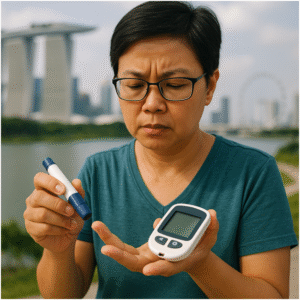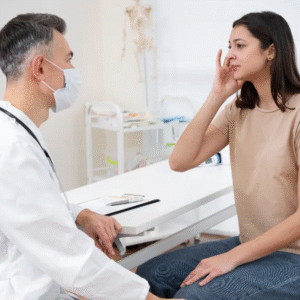Learn all about thrombosed hemorrhoids

Hemorrhoids, also known as piles, refer to swollen blood vessels located in the lower rectum and anus, the end of one’s digestive system where the stool leaves the body. The two types of hemorrhoids that can occur include internal (inside the rectum) and external hemorrhoids (beneath the surrounding the anus). However, these hemorrhoids may occasionally have complications, one of which happens to be thrombosis. Thrombosed hemorrhoids occur when a blood clot develops within hemorrhoid. Although this complication may affect both internal and external hemorrhoids, they tend to happen more commonly in external hemorrhoids.
There are several causes for hemorrhoids which include straining during defecation, constipation, diarrhea, increased pressure during pregnancy and sitting down for extended periods of time. But more often than not, the cause of hemorrhoids is unknown. Even more so for thrombosed hemorrhoids, doctors have not yet been able to determine what exactly gives rise to it.
Thrombosed hemorrhoids most commonly cause acute pain. During an examination, doctors may find a bluish colored, hard lump close to the anus which is sensitive and tender to touch. Thrombosed hemorrhoids occasionally cause bleeding as well. But in general, thrombosed hemorrhoids usually present with acute pain and a lump. The patient would probably also have a history some other symptoms of hemorrhoids which includes painless, bright red bleeding during bowel movements, itching surrounding the anus and swelling.
In terms of treatment for a thrombosed hemorrhoid, one can either wait for it to disappear on its own or removed via a simple surgical procedure. If the patient seeks treatment within the first 48-72 hours after the thrombosis occurred, removal of the blood clot under local anesthesia may be considered. It involves the administration of local anesthesia and a small incision to drain the blood clot. Patients tend to recover quicker with this method than if they were left alone at this stage. If the patient, however, seeks help after a long time has passed and after the acute pain has lessened, doctors may advise patients to consider home-based treatments such as warm baths, suppositories, ointments, cold packs and painkillers for pain relief. The body is capable of resorbing the clot and the lump would eventually disappear within a few weeks.
It is hard to tell their risk of recurrence with either treatment options. But the one thing for sure is that if the underlying cause for hemorrhoids is addressed, surely the risk for thrombosed hemorrhoids would decrease. Therefore, in addition to treatment for the thrombosis, doctors would advise on measures to treat hemorrhoids as well. They usually include lifestyle changes such as increasing fibre intake and using fibre supplements in order to soften stool. Patients should drink plenty of fluids and increase physical activity in order to improve bowel movement. When passing stool, patients are also advised to avoid straining and holding breaths because that generates higher pressures in the vessels at the anorectal region. Patients should also avoid waiting to pass stool and to go as soon as the urge to defecate occurs. This would help avoid stool from becoming dry and hard to pass. When necessary, topical treatments such as over-the-counter hemorrhoid creams, ointments or numbing agents may be considered to relieve discomfort, pain, and itching.
A majority of patients with any form of hemorrhoids are usually treated conservatively with the measures mentioned above. However, in less than 10{0f06621096951f9dc163056155f07a521f5203f52e6b53917fd291a1b5b72857} of those with hemorrhoids that are more severe, more advanced treatment such as surgery may be required. This is especially so if the pain does not go away or if the hemorrhoid is complicated by persistent bleeding.




